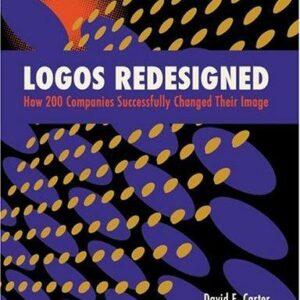Leadership Is Language
$27.00
| Title | Range | Discount |
|---|---|---|
| Trade Discount | 5 + | 25% |
- Description
- Additional information
Description
Wall Street Journal Bestseller
From the acclaimed author of Turn the Ship Around!, former US Navy Captain David Marquet, comes a radical new playbook for empowering your team to make better decisions and take greater ownership.
You might imagine that an effective leader is someone who makes quick, intelligent decisions, gives inspiring speeches, and issues clear orders to their team so they can execute a plan to achieve your organization’s goals. Unfortunately, David Marquet argues, that’s an outdated model of leadership that just doesn’t work anymore.
As a leader in today’s networked, information-dense business climate, you don’t have full visibility into your organization or the ground reality of your operating environment. In order to harness the eyes, ears, and minds of your people, you need to foster a climate of collaborative experimentation that encourages people to speak up when they notice problems and work together to identify and test solutions.
Too many leaders fall in love with the sound of their own voice, and wind up dictating plans and digging in their heels when problems begin to emerge. Even when you want to be a more collaborative leader, you can undermine your own efforts by defaulting to command-and-control language we’ve inherited from the industrial era.
It’s time to ditch the industrial age playbook of leadership. In Leadership is Language, you’ll learn how choosing your words can dramatically improve decision-making and execution on your team. Marquet outlines six plays for all leaders, anchored in how you use language:
• Control the clock, don’t obey the clock: Pre-plan decision points and give your people the tools they need to hit pause on a plan of action if they notice something wrong.
• Collaborate, don’t coerce: As the leader, you should be the last one to offer your opinion. Rather than locking your team into binary responses (“Is this a good plan?”), allow them to answer on a scale (“How confident are you about this plan?”)
• Commit, don’t comply: Rather than expect your team to comply with specific directions, explain your overall goals, and get their commitment to achieving it one piece at a time.
• Complete, not continue: If every day feels like a repetition of the last, you’re doing something wrong. Articulate concrete plans with a start and end date to align your team.
• Improve, don’t prove: Ask your people to improve on plans and processes, rather than prove that they can meet fixed goals or deadlines. You’ll face fewer cut corners and better long-term results.
• Connect, don’t conform: Flatten hierarchies in your organization and connect with your people to encourage them to contribute to decision-making.
In his last book, Turn the Ship Around!, Marquet told the incredible story of abandoning command-and-control leadership on his submarine and empowering his crew to turn the worst performing submarine to the best performer in the fleet. Now, with Leadership is Language he gives businesspeople the tools they need to achieve such transformational leadership in their organizations.Early praise for Leadership is Language
“Full of compelling advice on how to lead more effectively by choosing your words more wisely.”
–ADAM GRANT, author of Originals and Give and Take, and host of the TED podcast WorkLife
“Leaders have to make difficult decisions every day under conditions of uncertainty. How can they get the best information and ideas from their people to help them decide? Leadership is Language is a refreshing, actionable framework that helps you navigate uncertainty and tackle thorny problems by bringing out the best in your people.”
–ANNIE DUKE, author of Thinking in Bets
“In Turn The Ship Around, Marquet challenged us to change the way we lead; Now, in Leadership is Language, he challenges us to change the way we talk as leaders – dropping the archaic language of command and control and learning the language of creativity, collaboration, and commitment.””
–LIZ WISEMAN, author of Multipliers
“Another outstanding book from Marquet – and a truly unique take on leadership that re-engineers our language. Anchored in how teams actually talk, Marquet shows leaders how to leave the Industrial Age language behind and use a different, “more blue” model going forward.”
–VERNE HARNISH, founder of Entrepreneurs’ Organization (EO) and author of Scaling Up
“How do you motivate team and individuals to do their best, be their best? Marquet’s latest illustrates the powerful intersection of communication and leadership, with simple steps to transform your
thinking, your influence, and the lives in your span of care.”
–BOB CHAPMAN, CEO of Barry-Wehmiller and author of Everybody MattersDavid Marquet, a top graduate of the U.S. Naval Academy, commanded the nuclear-powered, fast-attack submarine USS Santa Fe from 1999 to 2001. Since retiring from the Navy he has worked with businesses nationwide as a leadership consultant. He gives presentations around the world about his acclaimed first book, Turn the Ship Around: A True Story of Turning Followers into Leaders. He lives in Florida with his wife, Jane.
A New Leadership Playbook
As I developed my thinking around the language of leadership, I formulated responses for leaders in various situations at work. I started thinking about these preplanned and preprogrammed responses that we have—patterns of action (and in our case, language) in response to, and triggered by, certain events or scenarios. Just like a sports play, you choose your play by reading the field and then making a deliberate decision about how to act. But I wasn’t sure about that metaphor and was still struggling with the overall structure of the book.
While this was going on, I boarded United flight 1139, the redeye from San Francisco to Tampa. I was headed home. Just after I buckled in, a man sat down next to me with a large duffle bag that he pushed under the seat in front of him. He pulled out a three-inch, three-ring binder and I could see a couple others in the duffle. It was a playbook, a football playbook! I did not recognize him, but it was John Gruden, who had just signed a contract to be head coach of the Oakland Raiders (again). He had served as head coach from 1998–2001. These were the playbooks for the Oakland Raiders.
I asked him about the playbooks. He accommodated me and flipped open to the front of the binder. The “plays” had nothing to do with football. They were about how the players, coaches, and staff would act off the field, in the locker room, at team events, and at practice. It was only in volumes two and three that the traditional pass plays and running plays were portrayed.
When we started discussing the organization of the binders the first words out of his mouth were, “Well, it’s all about language.” I took that as a sign from the heavens and settled on the playbook metaphor.
I think because of how I got there that when I say “play,” I often picture football because in that sport there is a break between each action. The field is reset and the offense has time to deliberately decide their next action: run, pass, or something else. So does the defense. And both sides are trying to read the other in determining their plan.
This pattern of executing plays or preplanned responses already exists in human behavior, business leadership, and language. The problem is that most of us are working with an outdated playbook: plays that we have been programmed to run from an older paradigm of leadership, the Industrial Revolution. In the early chapters of this book, I’ll explain how we inherited our language of leadership from the industrial era and why it’s so poorly suited to today’s work environment.
Above all, the promise of this book is to reveal not only the new plays appropriate for today’s challenges but also their underlying structure, the logic behind them, and how to use them with your team. Once you understand not only what to say but why and how, you will be able to find the right language for any situation. This will help establish a more effective working environment, leading to better outcomes across the board and a more satisfying and meaningful work experience for everyone in the organization.
Over the course of this book, I’ll introduce you to six new leadership plays, contrasting each one with the old plays. I will also show how the new plays work together, revealing an underlying approach that oscillates between action and reflection, doing and deciding. They are, in order:
1. Control the clock, instead of obeying the clock
2. Collaborate, instead of coercing
3. Aim for commitment rather than compliance
4. Complete defined goals instead of continuing work indefinitely
5. Improve outcomes, rather than proving ability
6. Connect with your people, instead of conforming to your role
Each of these plays hinges on specific use of language, and I’ll explain in detail how to execute them in the chapters to come.
Balancing Deliberation and Action
Fred is a hardworking executive at a manufacturing company. Every day, he faces a list of problems to solve, from making machines run better to hiring new workers, from improving overall output to dealing with trade tariffs. He feels the relentless pressure of the clock and, in his rush to get things done, he tends to run roughshod over other people. Fred spends the day coercing the team to do what he thinks best, then goes home feeling depleted, without any sense of having made much progress. He maintains a “professional,” arm’s-length distance from his employees, conforming to the role of boss.
Fred isn’t happy. Fred’s team members aren’t happy, either. They feel like Fred doesn’t trust them. He tells them what to do constantly and micromanages their work. They feel like they have to leave their humanity at the door: their creativity, empathy, and sense of purpose. There is little sense of progress for them, either. Every day feels much like the last. Everyone complies with what they’re told to do, but there’s little passion in it. They give just enough to get by and save as much of themselves as they can for after the end-of-day whistle.
Sue is a hardworking executive at a technology company across the street. Prone to contemplation, rumination, even depression, she struggles to make decisions. Everything seems like a big commitment. It’s overwhelming. Sue has a good sense of what she wants each project to look like at the end, but is often paralyzed in figuring out where to start. While the company founder urges her to “fail fast” and “break things” she isn’t exactly sure what those things mean to her. When she does make decisions, she feels like she gets second-guessed a lot.
Sue is frustrated. Sue’s team members are frustrated, too. They see projects that need to happen and ways of improving existing products, but they can’t get Sue’s sign-off on making meaningful changes. When they bring forward suggestions, she asks them question after question until there’s one they can’t answer—at which point they are sent back for more research. There is little sense of progress and every day seems like the last. The lack of progress and completion wears at morale. Turnover is high and people are disengaged.
It might seem like Fred and Sue have opposite problems. In reality, their problem is the same: an imbalance in the rhythm between doing and thinking.
Doing and thinking are the basic building blocks of all human activity. The correct balance of these two activities helps us achieve our goals. Unfortunately, many organizations struggle to maintain a healthy balance, tilting too far toward action, as at Fred’s manufacturing company, or too far toward deliberation, as at Sue’s technology company. Rather than being deliberately engineered, the think-do rhythm in most organizations arises automatically, from the many small decisions we make every day.
The right balance of doing and thinking keeps an organization adaptive and agile, innovative and entrepreneurial. It gives the people in the organization a sense of purpose and progress, which helps drive continuous improvement. In short, the right balance of doing and thinking drives learning. It keeps the company relevant and solvent. It keeps employees happy. It leads to happy customers, too.
By doing, I mean physical interaction with the world, whether that means driving a forklift or making a presentation to investors. Doing something doesn’t mean you aren’t thinking, but the brain operates much more automatically. For familiar behaviors like deeply ingrained habits—getting dressed or driving home, for example—our brains can go into almost fully automatic mode, wandering freely even as we shave with a razor or drive seventy miles an hour down the highway. As a result, doing does not tax the mind the way thinking does. Doing is our default mode because it is faster and more efficient, and our brains are nothing if not efficient.
By thinking, I mean the deliberate, curious, and open exploration of information, beliefs, stories, and assumptions in order to interpret the world around us. In our model, thinking occurs before and after doing. Before an action, the output of thinking is decisions: what are we going to do and what are we going to learn? After an action, the output of thinking is reflection upon what we have learned. In stark contrast with doing, the process of thinking is cognitively taxing and leads to mental fatigue.
The difference between doing and thinking can be described in several ways.
Our interaction with the world is doing. | Improving our interaction with the world is thinking.
Proving and performing is doing. | Growing and improving is thinking.
A focused, exclusive, driving, proving mindset is best for doing. | An open, curious, seeking, improving mindset is best for thinking.
The doing self is fully present in the moment, acting upon the world and reacting to stimuli dynamically. | The thinking self observes and reflects upon the doing self from a detached and levelheaded perspective.
We will keep Fred and Sue with us because we have some of both of them in all of us. Sometimes we are like Fred, running around with too little reflection. Sometimes we are like Sue, overwhelmed by the magnitude of the task before us and finding it hard to move forward.
US
Additional information
| Weight | 16.2 oz |
|---|---|
| Dimensions | 1.1000 × 5.7000 × 8.5000 in |
| Imprint | |
| ISBN-13 | |
| Author | |
| Audience | |
| BISAC | |
| Subjects | top books for men, money, decision making, mindset, BUS085000, entrepreneurship, Human Resources, conversation, business books, communication skills, BUS007000, leadership books, interview, leadership book, turn the ship around, meetings, employee motivation, workplace communication, delegation, leadership, management, psychology, teamwork, business, self help, workplace culture, organization, communication, business management, motivation, behavior, community, self help books, economy, psychology books, teams, motivational books |
| Format |











